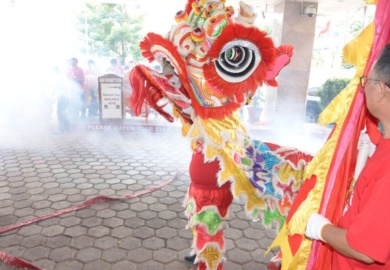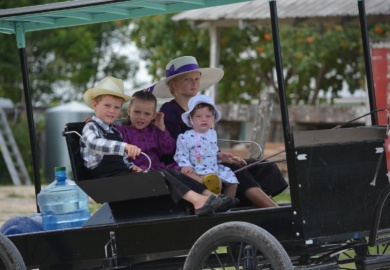By Rolando Cocom
It’s November 19. In dories and boats, the Garinagu1 bring coconut, plantain, cassava, and the drums of their ancestors to Dangriga’s shores, as the crowds—Belizeans and visitors alike—cheer and celebrate in the streets. This is Yurumein: the reenactment of the Garifuna journey to Belize. Garifuna Settlement Day is also a national holiday across Belize since 1943. It’s a celebration of culture, resilience, and vision.
A distinct cultural group
Yurumein translates to “St. Vincent,” an island in the Lesser Antilles and the homeland of the Garinagu. It’s where escaped West Africans from two shipwrecks in the 1600s—Spanish vessels on the way to the “New World”—took refuge from enslavement. They met the Arawaks and Caribs who were living on St. Vincent, and the inter-relations among these three—Africans, Arawaks, and Caribs—gave birth to the Garifuna people as a distinct cultural group.
The Garinagu lived in peace and prosperity on St. Vincent, alongside French settlers, until the British tried to colonize the island in 1763. Despite their best defense, the Garinagu were forced to surrender in 1796. The British subjugated and expelled them, transporting a large number of Garinagu to the inhospitable island of Balliceaux, and later to Roatán. Many Garinagu died during these crimes against humanity, while those who survived traveled to mainland Honduras, Guatemala, and Belize. Their culture and spirit of freedom lived on as they navigated from place to place.
Belize’s Garinagu
The Garinagu established coastal communities in Belize’s southern districts by the early 1800s. The abolition of the slave trade in 1808, coupled with emancipation in 1838, triggered a shortage of workers and they were allowed to settle as laborers for the mahogany trade. Many were later trained as educators; from the 1870s through 1970s, they traveled the length and breadth of Belize to teach in rural primary schools.
Predominant Belizean Garifuna communities today are Barranco, Georgetown, Seine Bight, Hopkins, Dangriga, Punta Gorda, and Libertad. These traditionally relied on subsistence fishing and farming, but they’ve since engaged in other industries.
Music and dance
Men, women, and children dance to the drums in brightly colored headscarves, dresses, and dashikis. Among music genres are the chumba, chárikanári, hüngühüngü, paranda, punta, and wánaragua, each with a specific purpose. Embedded within songs are the values, history, and identity of the Garinagu.
Punta is a faster-paced rhythm and dance—an offshoot you’re likely to hear is punta rock, created by Garifuna artist Pen Cayetano, which fostered a new level of cultural appreciation around the time of Belize’s independence in the 1980s.
Food and crafts
Garifuna meals feature plantain, banana, cassava, yam, and seafood. One of the main dishes is hudut—a coconut–based fish soup, served with plantains mashed in a traditional mortar. A number of meals are made with coconut milk, like bundiga and tapóu. There’s also ereba, or cassava bread. Cooking utensils are an integral part of Garifuna traditional knowledge, such as the ruguma, a woven instrument used to extract fluids from the cassava, or the híbise, a woven sifter used for cassava bread making.
Beliefs and values
Two sacred Garifuna rituals are the Beluria, a celebration held nine nights after a person’s death, and the Dügü, a private family reunion to celebrate and connect with the spirits of ancestors. Garifuna rituals bring reconciliation and healing in the family, including the ancestors; the bond among extended families is strong, as is the respect granted elders.
Preserving the future
In 2008, UNESCO proclaimed the Garifuna language, music, and dance as a Masterpiece of the Oral and Intangible Heritage of Humanity. Celebrating the Garifuna culture in Belize ensures that future generations remain proud of their identity and history, and proud of their ancestors.


